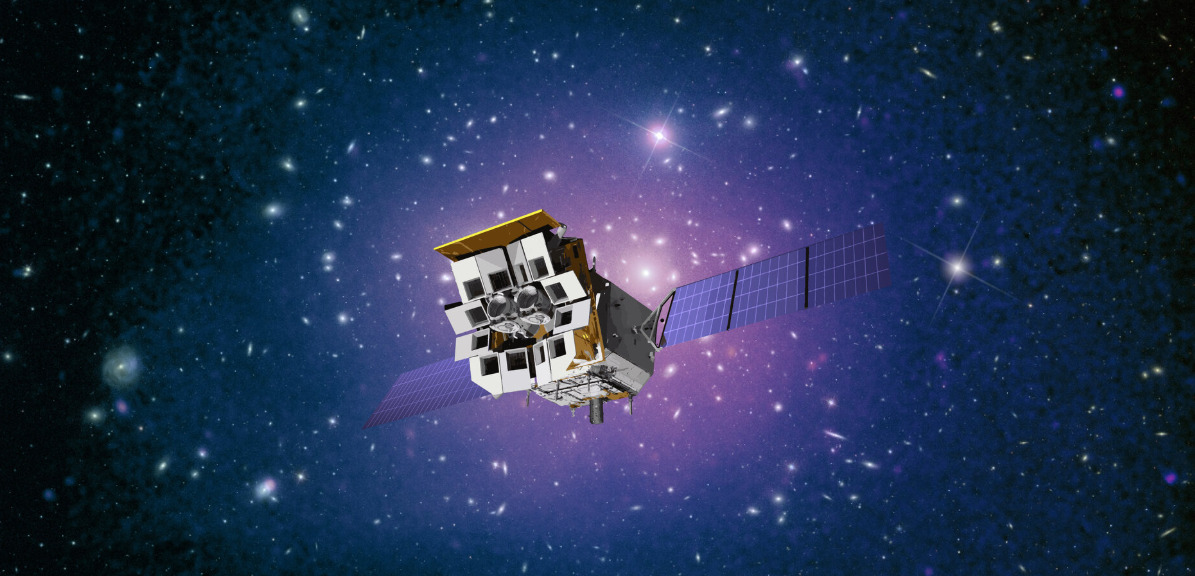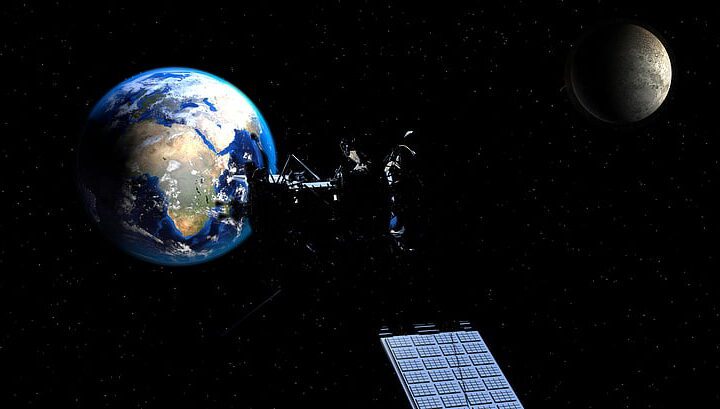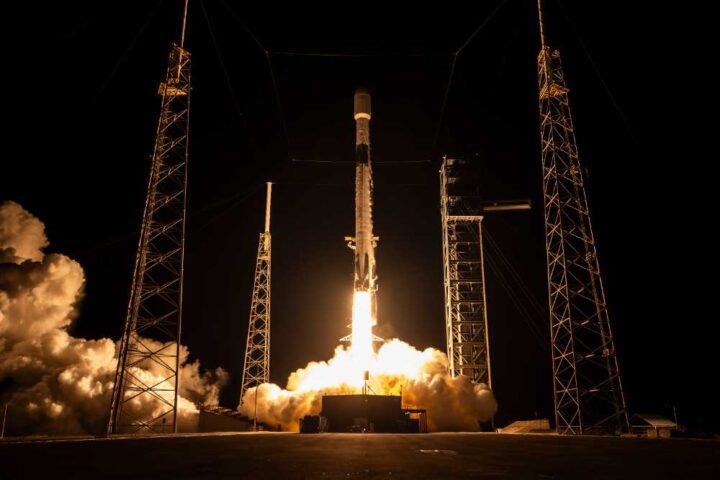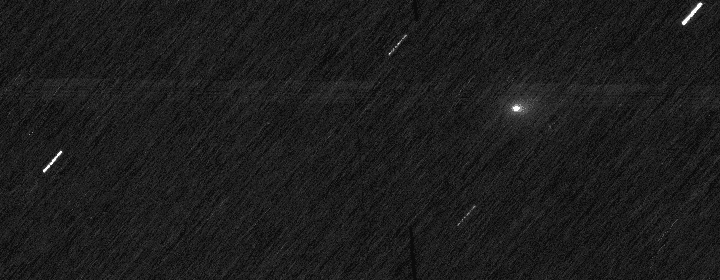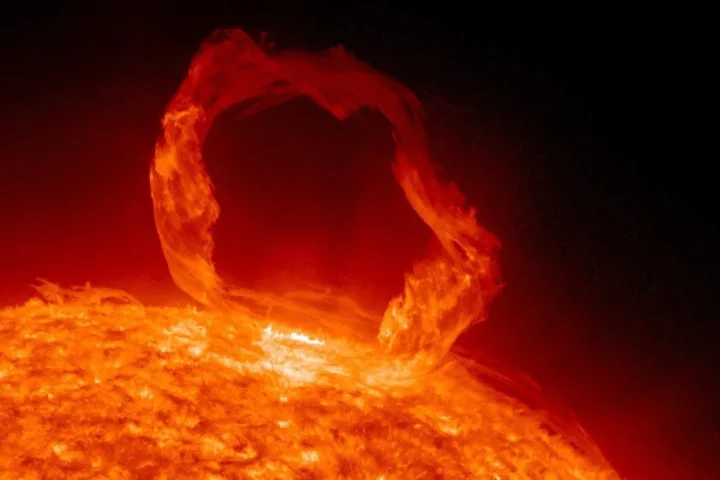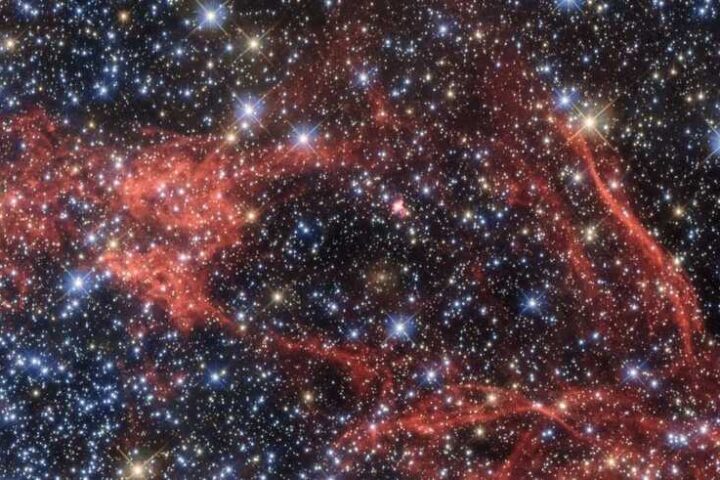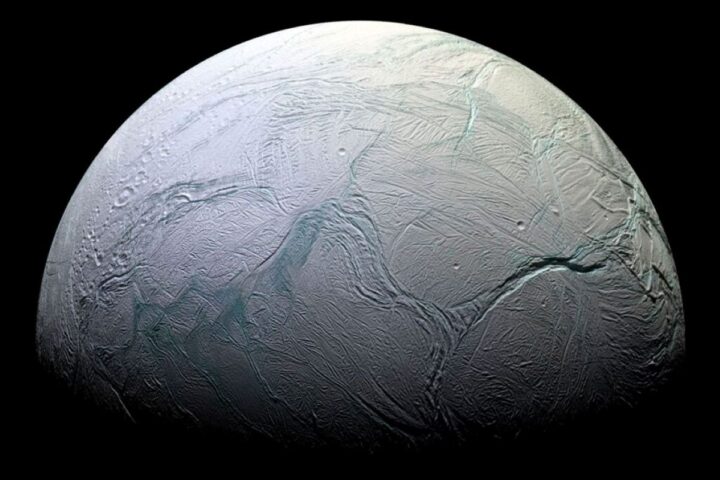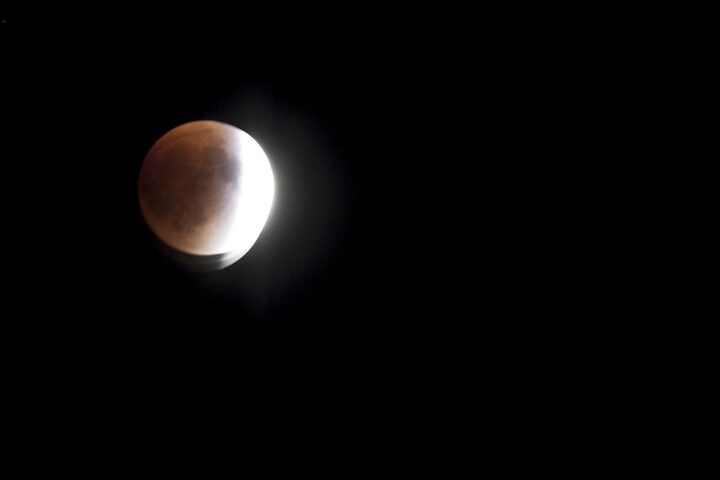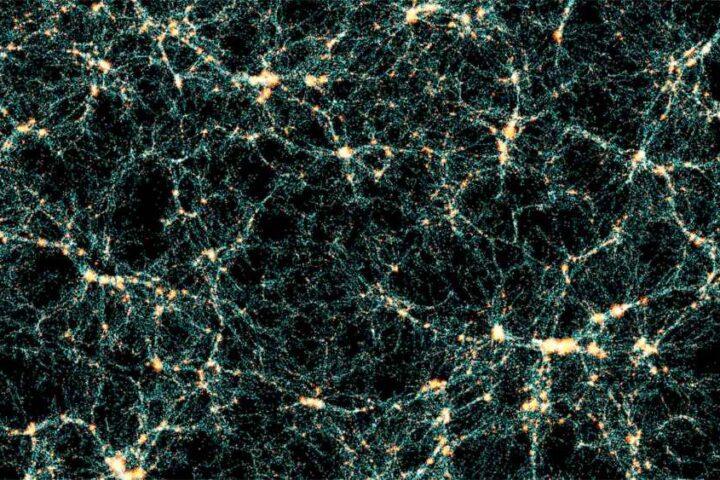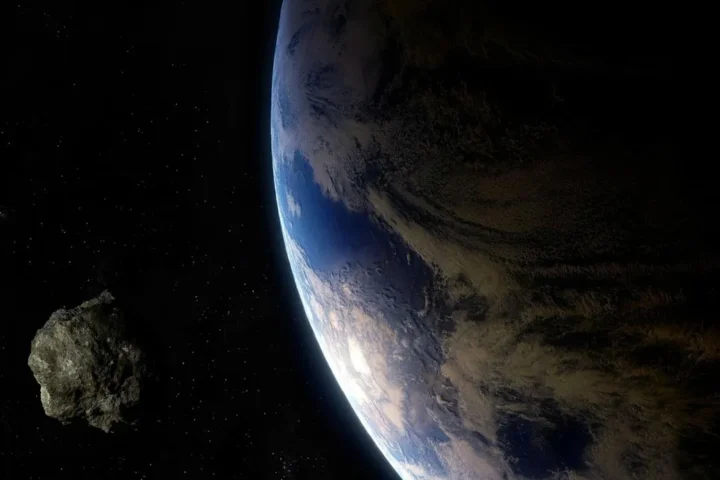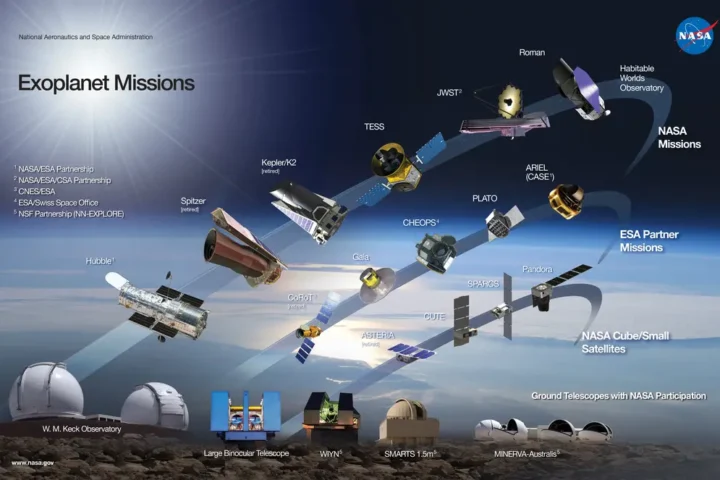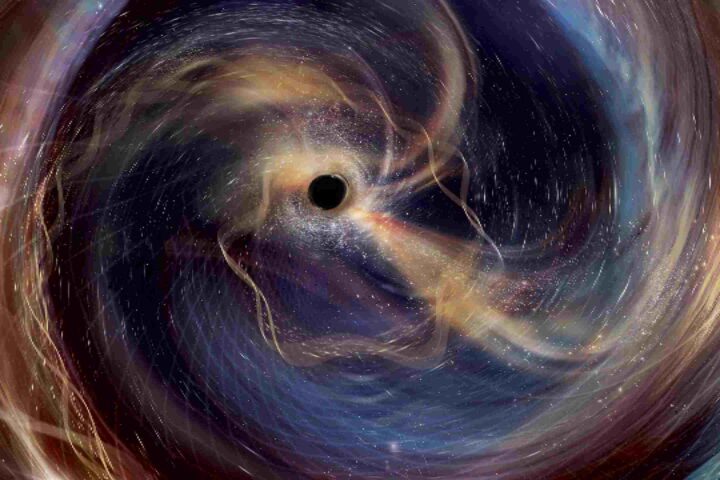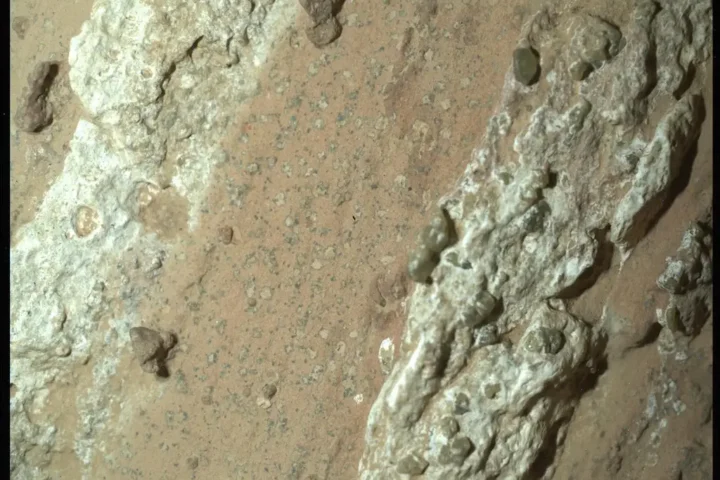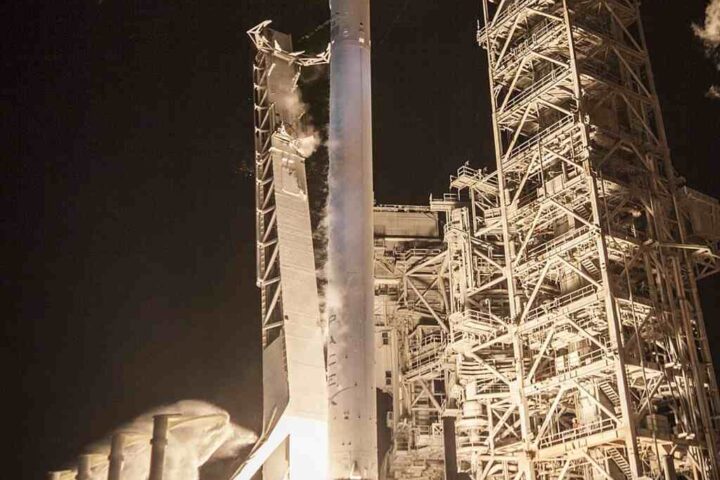A space telescope launched in January 2024 has caught two stars stealing material from each other, showing how stars can change dramatically over time.
The Einstein Probe telescope spotted unusual X-ray flashes coming from our neighboring galaxy on May 27, 2024. These flashes led scientists to discover something they rarely see – a pair of stars where one is feeding off the other.
“We realized that we were looking at something unusual, that only Einstein Probe could catch,” says Alessio Marino, who led the research at Spain’s Institute of Space Sciences.
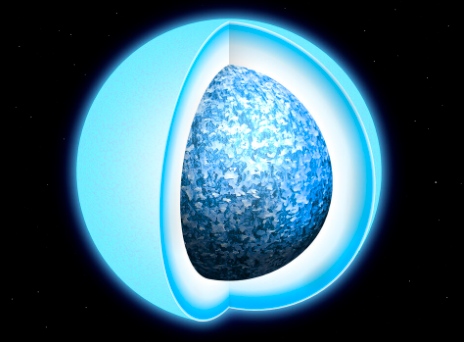
The larger star weighs 12 times more than our Sun. Its smaller companion, called a white dwarf, is incredibly dense despite having about the same mass as our Sun. What makes this pair special is their history – they started this process around 40 million years ago.
The story starts with two large stars. One star ran out of fuel and swelled up, losing its outer layers to its companion. The swollen star eventually shrunk into today’s white dwarf, while its partner grew into the larger star we see now. Today, the white dwarf pulls material from its larger companion, creating bright X-ray flashes when this stolen material explodes on its surface.
The Einstein Probe caught these flashes thanks to its special design. It uses a “lobster eye” system – 432 sensors that work together like a lobster’s eye to watch large areas of the sky at once. This lets it spot brief events other telescopes might miss.
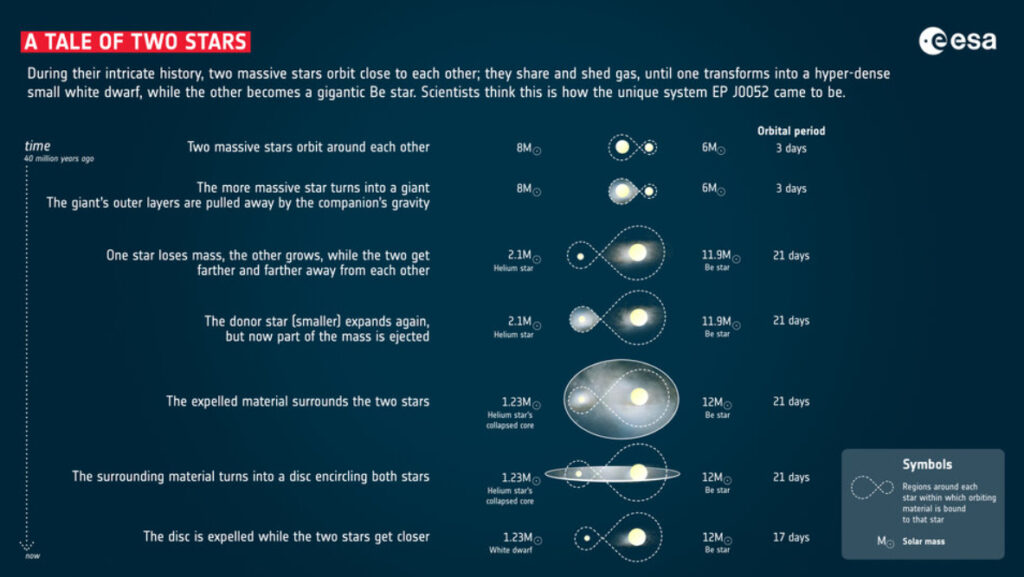
“This discovery shows us a rare moment in how stars evolve and exchange material,” explains Ashley Chrimes, who studies X-rays from stars at the European Space Agency (ESA).
The white dwarf’s future could be explosive. It’s now about 20% heavier than our Sun, getting close to a point where it might either collapse into an even denser object or explode as a supernova.
Similar Posts
After the Einstein Probe’s discovery, other space telescopes joined the investigation. NASA’s Swift and NICER telescopes helped study the X-ray flashes. ESA’s XMM-Newton telescope looked at the stars 18 days later, confirming the flashes had stopped.
“These kinds of star pairs are very hard to find because their X-ray flashes are usually too faint for other telescopes to see,” says Erik Kuulkers, who leads ESA’s work on the Einstein Probe.

The telescope is a joint project between China’s science academy, ESA, and Germany’s Max Planck Institute. Finding something this interesting so soon after launch suggests it will help us learn much more about how stars behave.
The research team has published their findings in The Astrophysical Journal Letters, adding an important piece to our understanding of how stars change over time.
